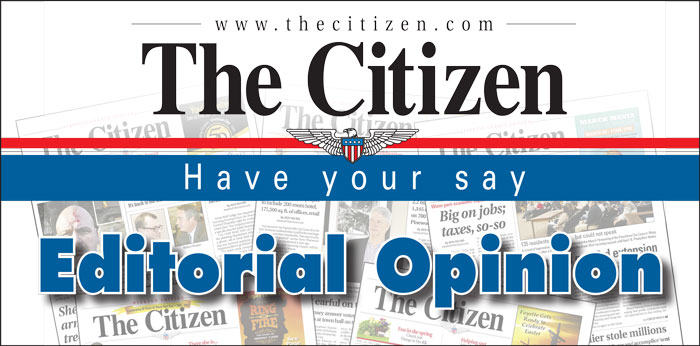By James Broughel
Mercatus Center Senior Research Fellow James Broughel will discuss regulatory reform for Georgia at the 2019 Georgia Legislative Policy Forum on November 15, 2019. Information and registration here.
In October, the White House announced a new Governors’ Initiative on Regulatory Innovation. Led by Vice President Mike Pence, the aim of the initiative is to work with state, local and tribal leaders to advance regulatory reform and, in particular, occupational licensing reform, in the states and around the country.
For three years, the Mercatus Center has been compiling data on state-level regulation. This effort has culminated in the release of a new dataset, called State RegData, which quantifies regulation across the U.S. states. Until recently, economists have not had good ways to assess how much regulation states have, either on their own or relative to one another. By extension, policymakers have not had a clear idea how much regulation their states have or how burdensome their regulatory environments are compared to their neighbors. That’s all starting to change as a result of work that Mercatus has been conducting.
State RegData uses text analysis and machine learning algorithms to convert legal text into data. State administrative codes are analyzed to identify the number of regulatory restrictions, as measured by counts of the terms “shall,” “must,” “may not,” “prohibited,” and “required.” Machine learning processes are also used to identifying the industries most targeted by state regulation.
Data are now available after a review of 46 state regulatory codes, plus the District of Columbia (Arkansas, Hawaii, New Jersey and Vermont couldn’t be evaluated in this edition as a result of data availability). The average state has 131,000 regulatory restrictions and 9 million words in its administrative code. It would take about 12 weeks to read the average state’s administrative code.
These data provide much-needed transparency as to the size and scope of the administrative state, and will no doubt prove useful for researchers in the future as they seek to better understand what causes some states to be more regulated than others, and what the consequences of all this regulation are.
In addition to being of use to ivory tower theorists, some states are actively using the data as part of their regulatory reform efforts. For example, in July, Ohio passed a regulatory reform law mandating that agencies eliminate two regulatory restrictions for each new restriction added until mid-2023. The Ohio legislation establishing this “two-for-one” policy references a metric similar to the Mercatus restriction count measure, specifically singling out “rules that include the words ‘shall’, ‘must’, ‘require’, ‘shall not’, ‘may not,’ and ‘prohibit.’”
A number of states have initiated red tape reduction efforts, often following an executive order or other executive action initiated by a governor. Governors in both Nebraska and Idaho have signed executive orders directing agencies to review their regulations and cut red tape. Both orders include restriction count estimates, either using Mercatus counts or counts produced on their own using the same methodology.
These kinds of reforms need not wait for an executive order to move forward. Individual, highly-motivated agencies can implement reforms all on their own. For example, the Idaho State Board of Pharmacy took it upon itself to start tracking regulatory restrictions, measuring progress as it cut its rulebook substantially.
In total, roughly 20 states have initiated some form of red tape cutting effort in recent years, and some of these have used Mercatus metrics or something similar to measure their progress. In addition to Nebraska and Idaho, Missouri, Illinois and Arizona have all had such efforts. The governor of Missouri recently claimed to have cut one out of every five regulations. Idaho claims to have cut 19,000 restrictions, and is on track to cut even more.
Some states, like Virginia, are opting to manually count up all of their regulatory requirements, rather than rely on computer estimates. In 2018, Virginia passed a Regulatory Reduction Pilot Program law. This effort is marrying regulatory process reform with occupational licensing and criminal justice reform. In this regard,
Virginia may be the state that the new White House initiative should pay closest attention to: It is cutting red tape and reforming occupation licenses all in one fell swoop. As of this month, the two agencies involved in the pilot program claim to have cut about 10% of their requirements, which means they are on track toward achieving their goal of reducing requirements by 25% in three years.
Both the states and the federal government have the opportunity to build on current successes. Importantly, individual agencies in the federal government or the states need not wait for legislators, the president, or a governor to prioritize regulatory reform. Highly motivated reformers within agencies can do a lot on their own. The Trump administration is taking notice of these impressive state efforts and should learn from their success; data tools are available from the Mercatus Center to help in that endeavor.
[This commentary by James Broughel, Senior Research Fellow at the Mercatus Center at George Mason University, was published October 23, 2019, in The Bridge, and is reprinted by the Georgia Public Policy Foundation with permission. The Georgia Public Policy Foundation is an independent, nonprofit, state-focused think tank that proposes market-oriented approaches to public policy to improve the lives of Georgians.]













Leave a Comment
You must be logged in to post a comment.